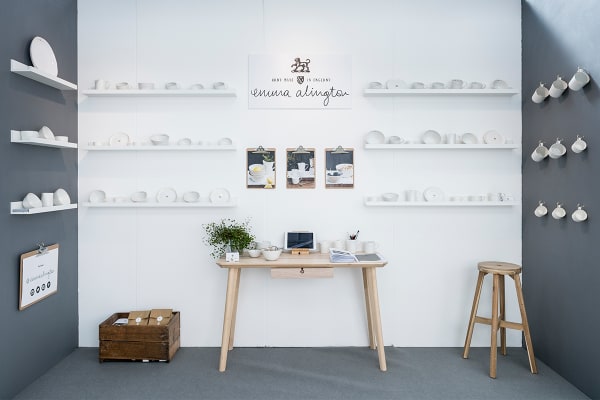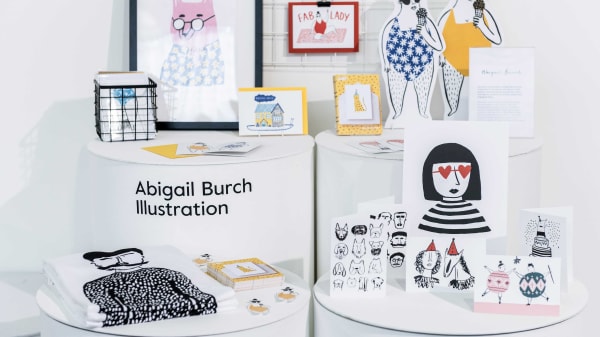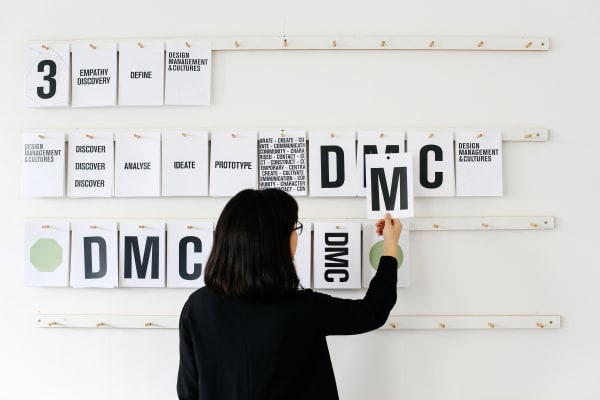
Having a presence online is a cost-effective way to promote your skills or business. It also makes it easy to share your work with peers, employers, and the people you’d like to work with.
Website
If you’re looking to find work, launch a business, or freelance in the creative industries, having a website that shows the world what you do is a good place to start.
Thankfully there are many affordable website builders out there that will enable you to quickly launch and manage your own website with ease. Popular site builders include Squarespace, Wordpress and Wix – but there are many more on the market so it’s worth doing your research to decide which one will work best for you.
If you’re looking to do something bespoke, you may consider working with a digital designer to build a custom site using html. If you want to learn to code yourself, Code First: Girls runs free coding courses for women aged 18+ who are currently studying and Codecademy offers free online courses to help you get started.
What makes a good website?
Content – plan the architecture of your website before you build it. What pages do you need and what’s the hierarchy of these pages? It can be helpful to look at competitor websites to help you to plan what you might need.
User Experience - consider how users might interact with your website when designing it and make it as easy to navigate as possible. Think about which pages users are likely to land on first and consider what you can do to shape their first impression and overall experience of the site. Think about who your audience might be and try to make the website represent your artwork, portfolio or business without any prior knowledge of you or your work. Including something engaging and visually interesting on your homepage will improve your chances of users exploring your site, rather than navigating elsewhere.
Clear navigation – using common words in your navigation (such as home, contact, about) will help people to find their way around your website. Short term memory only holds 7 items so try to keep your top-level navigation to 7 items or fewer.
Design for mobile – web visits from mobile phones and other devices are on-the-up so make sure you us a mobile responsive template for your site. Test what your pages look like on desktop and mobile before you publish them too.
Search Engine Optimisation (SEO) – search engines use algorithms to read and rank websites. This determines where your site appears when somebody searches for a relevant term, so it’s important that the content on your site is written and presented in a way that will help your SEO.
Once you’ve launched your site, having changing content (e.g. blog posts) will both encourage new visitors and improve your SEO ranking.
Photography – ensure that the images you use are high quality and representative of your brand. Resizing images and saving them for web before you upload them will help to make sure that they appear correctly. Giving them descriptive file names will help them to appear in image searches and support your site’s SEO.
Marketing – once you’re happy with it, start sharing your website. Add it to your professional profiles and social media accounts, business cards and printed collateral and link to it in your emails and newsletters.
Encourage users to follow your content by linking to your social media, blogs or YouTube/Vimeo pages from your website. You can include social media icons and even embed social media feeds; just make sure any accounts you link to are professional. Many site builders allow you to embed video content easily using a URL rather than uploading the video directly to your site.
If you’ve got any live projects under your belt it’s also worth asking your clients if they’d be willing to link to your website from theirs.
Keep it up-to-date – your website is an extension of your CV and portfolio so make sure that you check and update the content regularly.
Portfolio sites
If you have lots of visual work, you may consider presenting it on a portfolio site instead or as well as on a website:
UAL portfolio – the University’s platform enables students to showcase their work. Create a profile, upload projects to your portfolio and connect with other users.
Behance – a popular portfolio platform popular with graphic designers, illustrators, photographers and animators.
Portfoliobox– another online portfolio tool aimed at photographers, designers, artists, make-up artists, models and architects.
Useful links and resources
- Google Digital Garage - provides free online courses in subjects including digital marketing and social media
- 11 Website Design and Development Best Practices - Forbes
- The Top 4 Basic SEO Principles – Entrepreneur Europe
-

Photo by Damian Griffiths
Exhibitions and trade shows
Read our advice on how to get the most from selling and showcasing your work at exhibitions and trade shows.
-

Abigail Burch's stand at Pulse 2018. Photo by Damian Griffiths
How to get paid
Get advice on pricing, invoicing and selling your work as a designer, maker or artist.
-

Image by Alys Tomlinson
How to manage your IP
Read our tips and advice on how best to manage and benefit from the value of your intellectual property (IP).